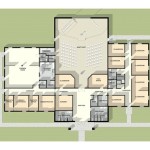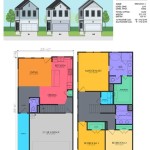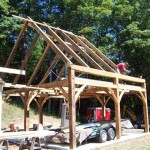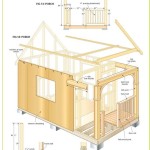Navigating Home Plans with Free Cost-to-Build Estimators
Embarking on a home construction project represents a significant financial investment. Accurate cost estimation is critical to ensuring project feasibility and avoiding budget overruns. A crucial tool in the planning process is the home plan, coupled with a reliable cost-to-build estimator. This article explores the utility of home plans and the functionality of free cost-to-build estimators, emphasizing their role in informed decision-making.
Home plans serve as the blueprint for the entire construction process. These plans detail the structural design, layout, and aesthetic elements of the house. They typically include floor plans, elevation drawings, site plans, and foundation plans. Furthermore, they specify materials to be used, dimensions of rooms, and locations of electrical and plumbing fixtures. A well-crafted home plan acts as a comprehensive guide for builders, ensuring that the final product aligns with the homeowner's vision and adheres to all relevant building codes and regulations.
Cost-to-build estimators provide a preliminary assessment of the expenses associated with constructing a home based on the chosen plan. These estimators utilize various factors, including the size of the house, the complexity of the design, the quality of materials, labor costs, and geographical location. A free cost-to-build estimator offers a readily accessible and convenient way to generate initial cost projections, allowing homeowners to evaluate the affordability of different home plans early in the process. It's important to note, however, that free estimators typically provide a broad estimate and may not account for unique site-specific challenges or highly customized features.
Understanding the Components of a Home Plan
A complete set of home plans encompasses several distinct components, each contributing vital information to the construction process. Failing to understand these components can lead to miscommunication and potentially costly errors during building.
Floor Plans: These diagrams depict the layout of each level of the house, showing the arrangement of rooms, hallways, and other spaces. Floor plans specify the dimensions of each room, the location of doors and windows, and the placement of major appliances and fixtures. They are essential for understanding the overall flow and functionality of the home.
Elevation Drawings: These drawings provide exterior views of the house from different angles, typically the front, rear, and sides. Elevation drawings illustrate the style of the house, the types of exterior materials to be used (e.g., siding, brick, stone), the roof pitch, and the placement of windows and doors. They give a visual representation of how the house will look upon completion.
Site Plan: The site plan shows the location of the house on the property, including the orientation and placement of the building relative to property lines, roads, and other structures. It also indicates the location of utilities, such as water, sewer, and electrical lines, as well as any landscaping features. The site plan is crucial for ensuring compliance with zoning regulations and for planning the efficient use of the property.
Foundation Plan: This plan details the foundation of the house, including the type of foundation (e.g., slab, crawl space, basement), the dimensions of the foundation walls, and the location of any footings or support beams. A well-designed foundation is essential for ensuring the structural integrity of the house.
Electrical and Plumbing Plans: These plans show the location of electrical outlets, switches, light fixtures, and plumbing fixtures throughout the house. They specify the wiring and piping systems, including pipe sizes and electrical circuit layouts. These plans are critical for ensuring that the electrical and plumbing systems are installed safely and efficiently.
Structural Plans: These plans provide detailed information about the structural components of the house, such as framing, roofing, and load-bearing walls. They specify the materials to be used and the construction methods to be followed. Structural plans are essential for ensuring the stability and safety of the house.
Leveraging Free Cost-to-Build Estimators
Free cost-to-build estimators offer a valuable starting point for budgeting a home construction project. However, users must be aware of their limitations and understand how to interpret the results effectively.
Data Inputs: Most free estimators require users to input information about the size of the house, the number of bedrooms and bathrooms, the desired level of finish, and the geographical location. The accuracy of the estimate depends heavily on the accuracy of these inputs. It is important to provide realistic and well-researched information.
Cost Categories: Estimators typically break down the total cost into different categories, such as materials, labor, permits, and fees. This allows users to understand where the majority of the expenses are allocated. It is important to review these categories carefully and to consider any additional expenses that may not be included, such as landscaping or interior design.
Regional Variations: Labor and material costs can vary significantly depending on the geographical location. Estimators that account for regional variations will provide more accurate estimates. Users should ensure that the estimator they are using is calibrated to their specific location.
Limitations: Free cost-to-build estimators often rely on average costs and may not account for unique site conditions, customized features, or unforeseen challenges. They should be viewed as a preliminary guide rather than a definitive budget. It is always advisable to obtain multiple quotes from local contractors to get a more accurate assessment of the costs involved.
Supplementing the Estimate: After obtaining an initial estimate from a free tool, it is prudent to consult with local builders, contractors, and suppliers to refine the budgetary figures. These professionals can provide insights into prevailing market rates and identify potential cost-saving opportunities. Furthermore, they can help account for site-specific factors that could influence the total cost.
Key Considerations for Using Home Plans and Estimators
Effectively utilizing home plans and cost estimators involves careful planning and attention to detail. Several key considerations can significantly contribute to the success of the project.
Choosing the Right Home Plan: The selection of a home plan should be driven by lifestyle needs, budgetary constraints, and aesthetic preferences. It is important to carefully review multiple plans and to consider the long-term implications of each design. Factors to consider include the size of the house, the layout of the rooms, the energy efficiency of the design, and the potential for future expansion.
Accurate Measurements and Specifications: Ensure that all measurements and specifications in the home plan are accurate. This is crucial for obtaining accurate cost estimates and for avoiding errors during construction. Double-check all dimensions, materials, and quantities listed in the plan.
Local Building Codes and Regulations: Before starting construction, it is essential to ensure that the home plan complies with all local building codes and regulations. These codes govern various aspects of construction, including structural integrity, fire safety, and accessibility. Failure to comply with building codes can result in costly delays and modifications.
Contingency Planning: Construction projects often encounter unexpected challenges, such as weather delays, material shortages, or unforeseen site conditions. It is important to include a contingency fund in the budget to cover these potential costs. A contingency fund of 5-10% of the total project cost is generally recommended.
Professional Consultation: While free cost-to-build estimators provide a useful starting point, nothing replaces the expertise of a qualified professional. Consulting with an architect, structural engineer, or experienced contractor can provide valuable insights and help avoid potential pitfalls. These professionals can review the home plan, assess site conditions, and provide accurate cost estimates.
Material Selection: The choice of building materials significantly impacts the overall cost of the project. Premium materials, while visually appealing, often come with a higher price tag. Exploring cost-effective alternatives without compromising quality is recommended. Obtaining quotes from multiple suppliers allows for comparison and informed decision-making.
By carefully considering these factors and utilizing home plans and cost-to-build estimators effectively, homeowners can navigate the complexities of home construction with greater confidence and ensure a successful outcome.

Affordable House Plans With Estimated Cost To Build 500 Modern

Home Cost Estimate Fhp

Cost To Build A Home

House Plans Cost To Build All You Need Know

House Plan Central Hpc 2026 16 Is A Great Houseplan Featuring 2 Bedrooms And Bath 0 Half

Estimating Building Costs

Calculator Step 1

Cost To Build A Home

2024 Cost Of Drafting House Plans Blueprints Homeguide

Home Cost Estimate Sample Fhp








